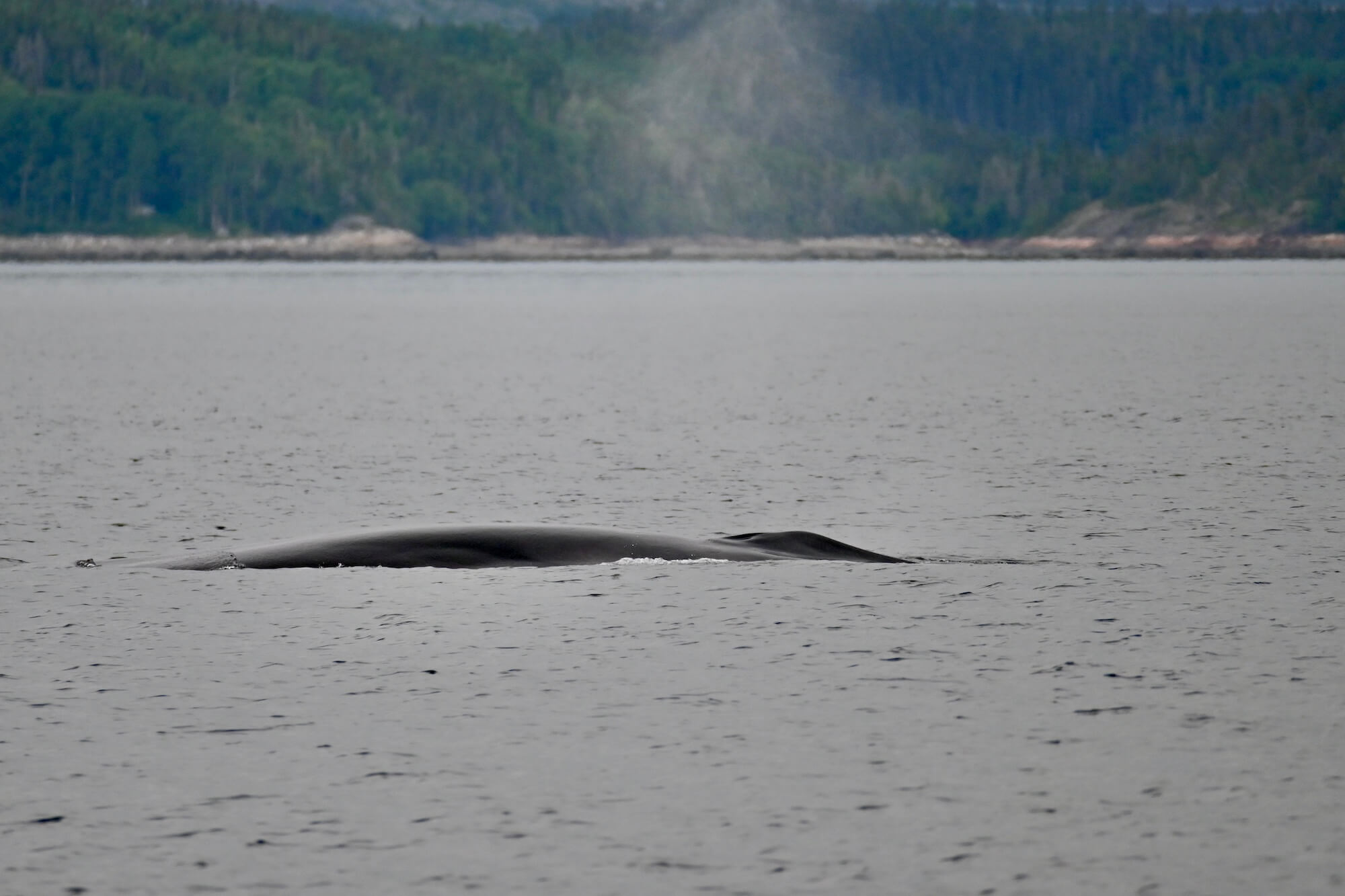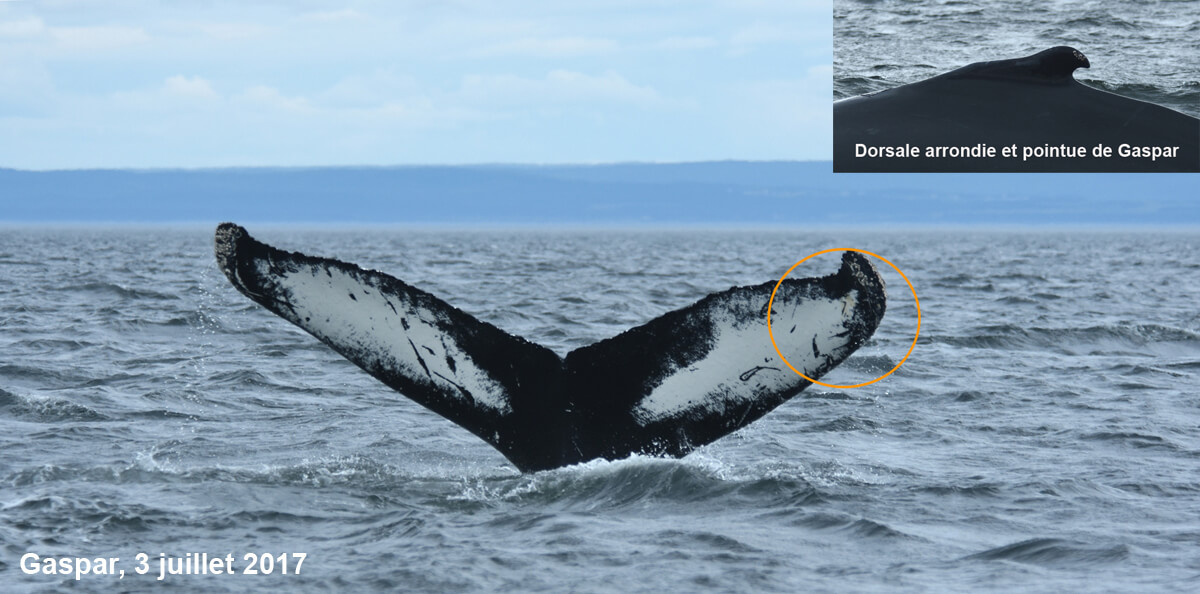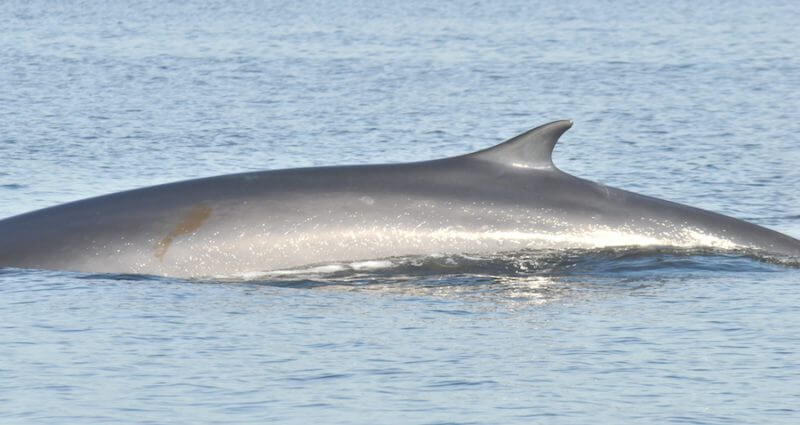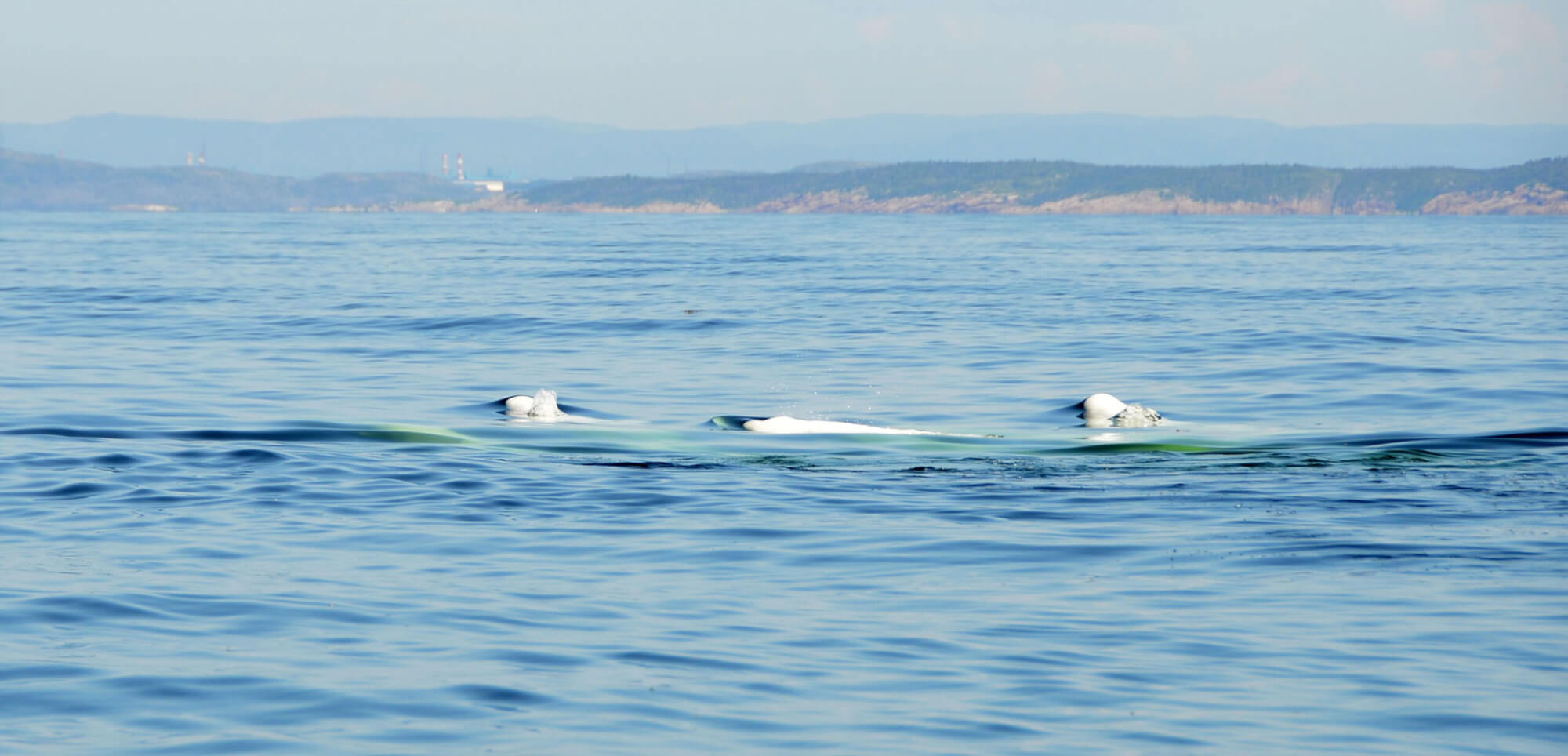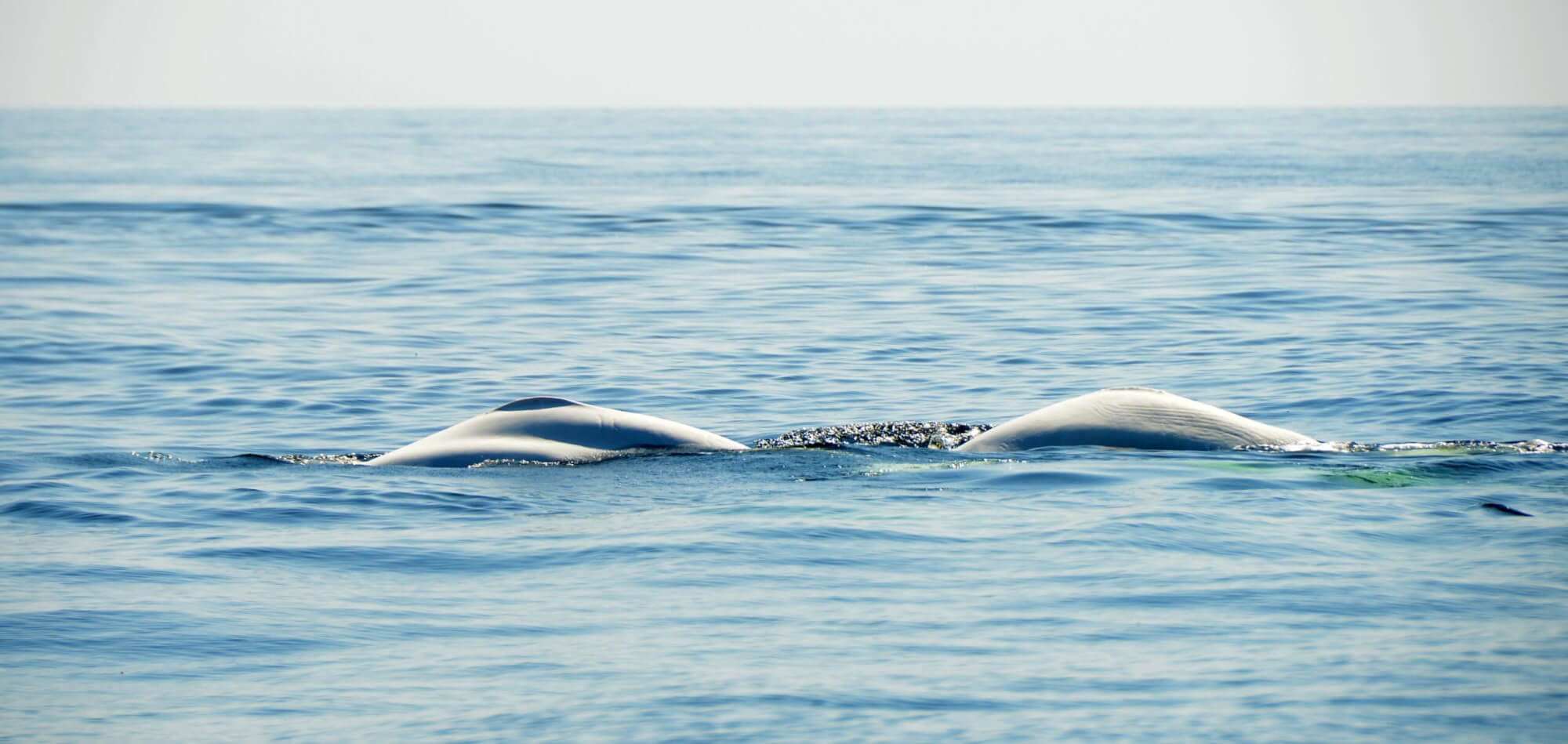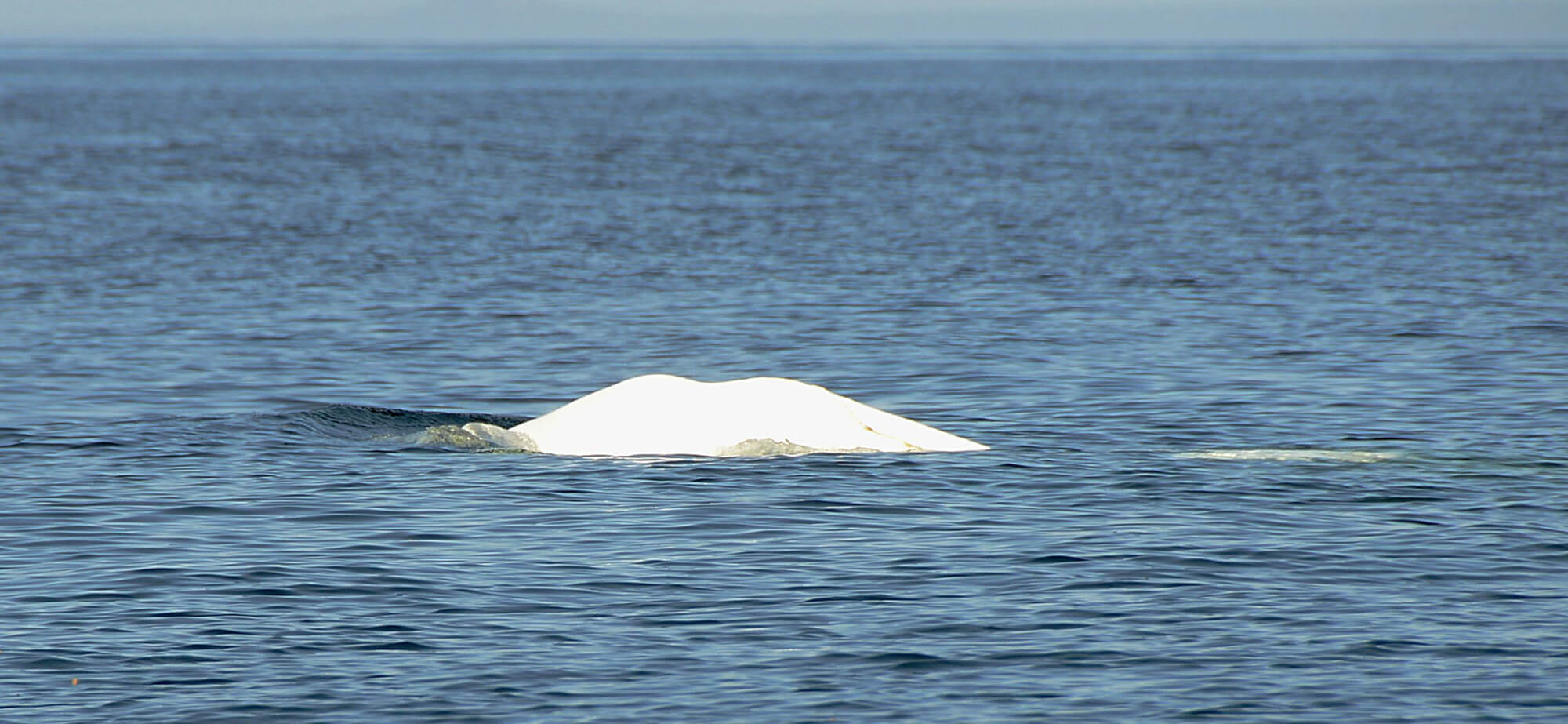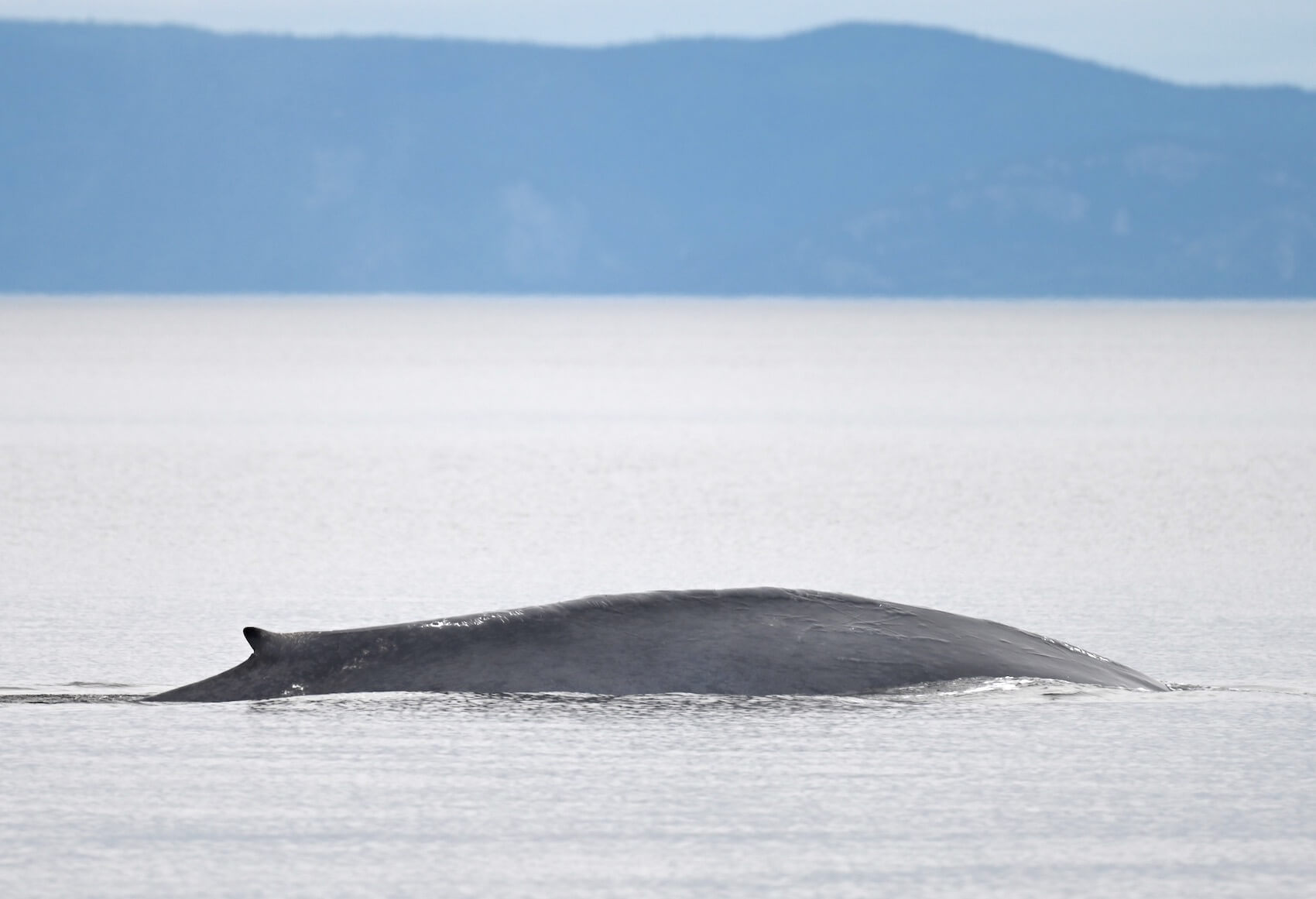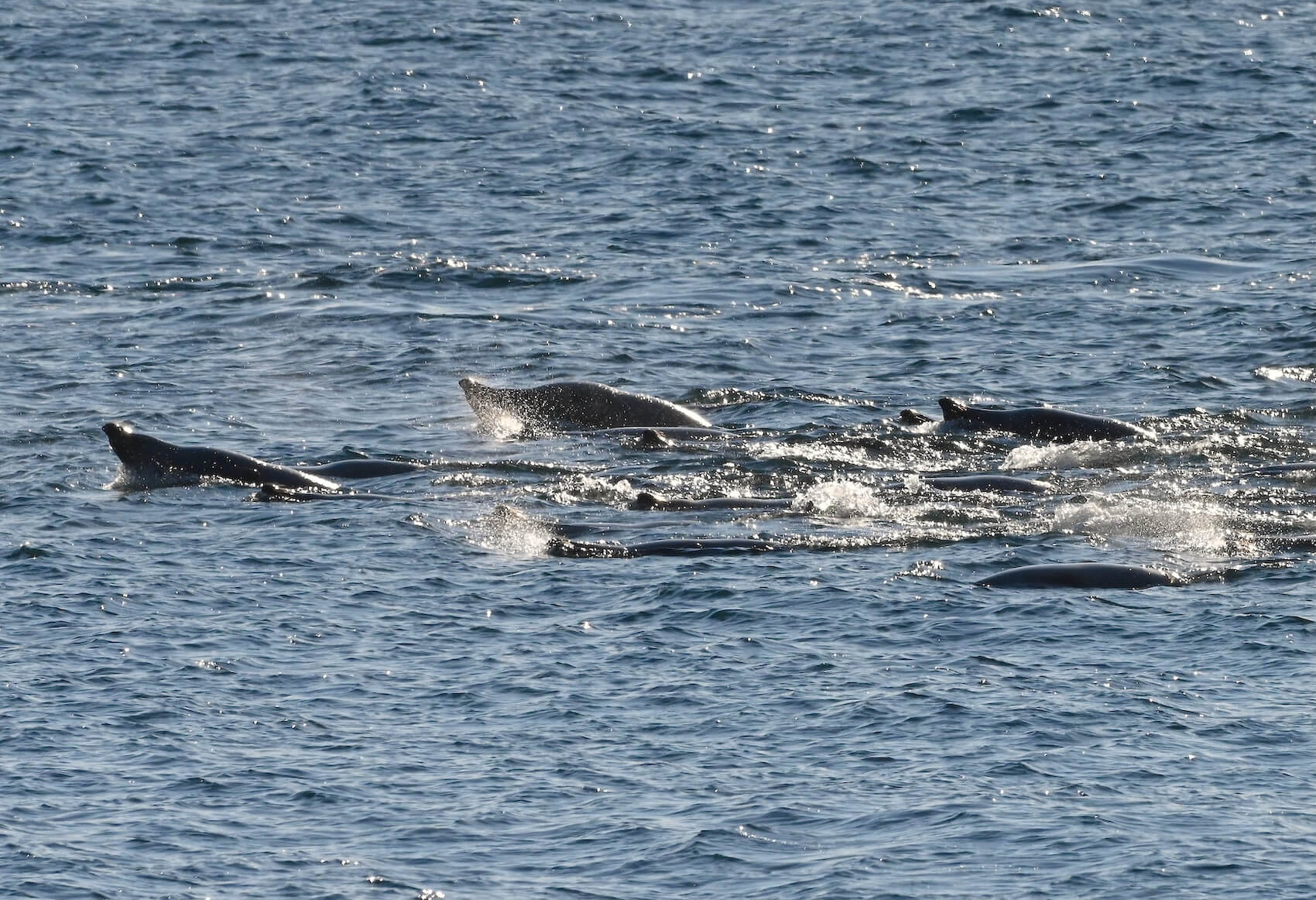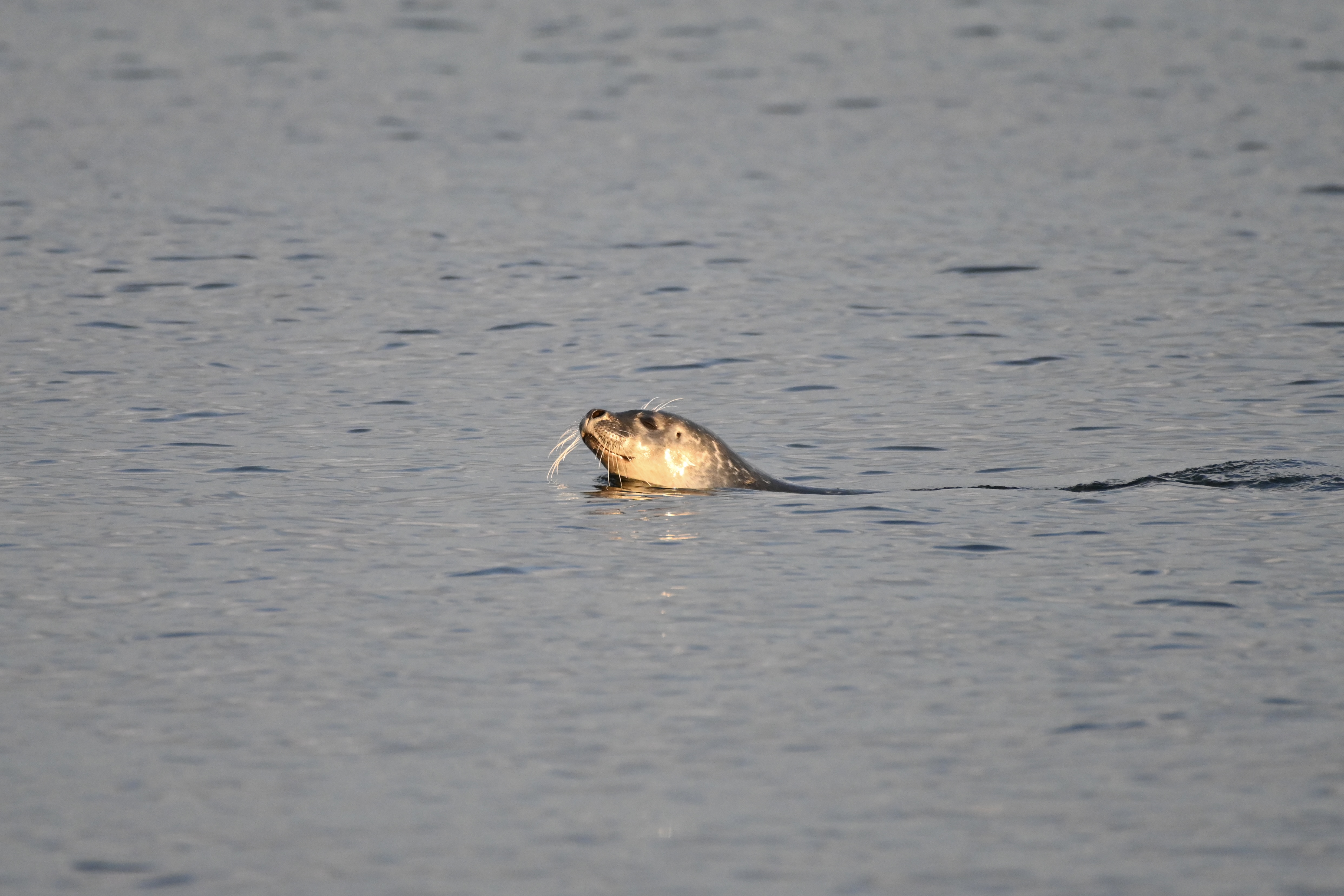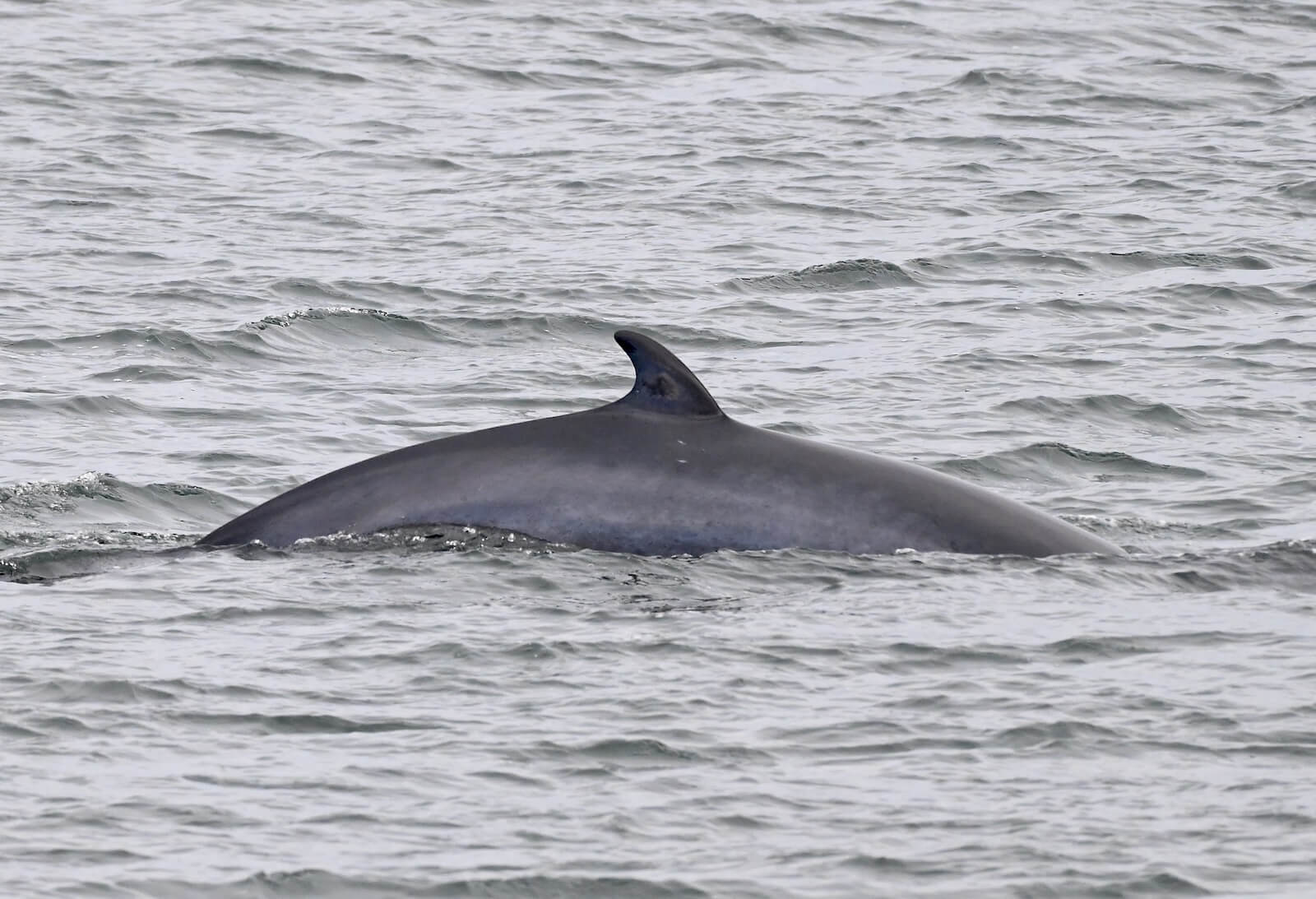Are the month of July and warm summer days synonymous with action in the St. Lawrence? More and more large whales are arriving in the Estuary, much to the delight of observers, and some of them are even being identified! Belugas are lingering in Gaspé Bay and around Sept-Îles, while evenings along the river offer colourful surprises in the form of blue whales and white belugas.
Large whales identified
In the Saguenay–St. Lawrence Marine Park, whale IDs are on the rise. Humpback whale H742, also known by the nickname Chalk, was observed on July 2. This individual was also seen in the area in 2021 and 2023, as well as in 2011 and 2019. The animal has also been seen in the Matane area for each of the past two seasons.
One mariner crossed paths with a well-known female humpback that has been observed almost annually since 2006. As she was sailing along the coast, a whale appeared: “[…] When I saw it lift its tail, I was overjoyed! […] I had a feeling I was in for a nice surprise! It surfaced a few minutes later near my boat, and I immediately knew who it was when I saw its beautiful hooked dorsal, but I wanted to get a glimpse of its tail just to be sure.” As if to keep me in suspense for a few more minutes, she didn’t show her tail this time, and it wasn’t until the following dive that I was able to confirm that she was who I thought she was!” It was Gaspar, who is easy to recognize by the colour pattern on the ventral side of her caudal fin. Her right lobe shows the shape of the famous ghost to which she owes her moniker.
One of the other celebrities of the week is fin whale Bp918, a.k.a. Kashkan, who was first observed in 2000. Kashkan has been seen several times since then, making him a seasonal resident of the St. Lawrence Estuary. A biopsy confirmed that Bp918 is indeed a male. His nickname translates as “waves” in Innu-aimun, the language traditionally spoken by members of the Innu community of Essipit.
The season is also in full swing in the Mingan sector and around Sept-Îles. During their outings on the water, MICS teams have spotted more than 13 fin whales, three humpbacks, and a few minke whales, while a basking shark continues to linger in the area.
With all these whales identified in the last week, one naturalist commented: “Perhaps this is really the start of the season!”
Vita and white whales in the gulf
The presence of belugas in Gaspé Bay has been the talk of the town. Amongst the numerous sightings, we got wind of a group of four, including a young one, swimming off the shores of Forillon National Park. On a different day, a whale enthusiast spotted five individuals, while some residents were able to admire a white back in the Penouille area.
Similar situation in Sept-Îles, though the groups seem to be even larger. The Sept-Îles Education and Research Centre (CERSI) informed us about the presence of over thirty individuals. “Some had significant markings, including one I believe is Vita,” explains CERSI researcher Anik Boileau. The identification was later confirmed by teams from the Group for Research and Education on Marine Mammals (GREMM), which studies the species. This male can be recognized by the long, deep scar on his left flank. The presence of a large hump in front of the animal’s dorsal ridge, which has grown in size over the years, is also distinctive. Known since 1989, Vita is part of a group of about twenty adult bulls known as the Saguenay group, which generally roams the Saguenay Fjord and its mouth.
For GREMM Scientific Director Robert Michaud, it is still impossible to draw any conclusions about the presence of belugas in the gulf this time of year. In an interview with Radio-Canada, he ponders: “Are these visitors precursors to a change in the beluga’s distribution, or are they simply individuals hanging around a bit before returning to the Saguenay–St. Lawrence Marine Park later this summer? […] We know that climate change has resulted in considerable impacts habitat-wise, particularly due to rising temperatures, and that’s quite spectacular. So we can imagine different mechanisms that could lead to changes in the belugas’ habits.” Notably, we know that the species’ diet has been evolving in recent years.
Blue whales and evenings with the family
However, it wasn’t just belugas that were in Gaspé Bay! One enthusiast was moved by her latest observations: “[…] at least eight humpbacks with breathtaking displays (breaches, pectoral slapping, etc.), a fin whale […]. Harbour seal pups basking in the sun in the colonies amongst the adults.” During an evening at the water’s edge, one resident was taken aback by the presence of the largest of all whales. His initial objective, however, was to see the humpback whale Gaspar, which he was able to observe from a distance, before she moved away.
“Then, I heard a powerful blast, which couldn’t have been anything but the spout of a large whale. However, Gaspar was much too far away for it to be hers. Then I figured it must be another big whale. A few seconds later, the deafening sound rang out again and that’s when we knew that it wasn’t just any big whale, but the biggest one of all. A blue whale. A family from Saint-Siméon was treated to an unforgettable scene in Charlevoix. “Monday evening in Port-au-Persil was family time. On several occasions, we were lucky enough to see a mother beluga with her baby offshore.”
Beluga logging
A new resident of the Côte-Nord region had the good fortune to observe his very first belugas! “At Pointe-Noire, there were at least ten of them in the afternoon, including a mother who seemed to be nursing! I had to reassure a few folks who seemed absolutely convinced she was dead. Everyone let out a sigh of relief when we saw her take a few dives.” Perhaps she was logging? This behaviour consists of floating on the surface like a log, which belugas can do for 30 to 45 minutes. Actually, this is simply how the animals rest.
Where are the whales this week? Sightings map
These data were reported by our network of observers. They give an idea of the presence of whales and in no way represent the actual distribution of whales in the St. Lawrence. Just for fun!
Click on the whale or seal icons to discover the species, the number of individuals, additional information or photos of the sighting. To enlarge the map, click on the icon in the top right-hand corner. The map works well on Chrome and Firefox, but not so well on Safari.
To display the list of sightings, click on the icon in the top left-hand corner.
Thanks to all our collaborators!
Special thanks go out to all our observers who share their love for marine mammals with us! Your encounters with cetaceans and pinnipeds are always a pleasure to read and discover.
On the water or from shore, it is your eyes that give life to this column.
Sabrina Artuza
Odélie Brouillette
Émile Boulanger
Marie-Andrée Charlebois
Krystal Chandler
Guylaine Côté
Thalia Cohen-Bacry
Laeticia Desbordes
Julie Fresquet
Benjamin Gagné
Audrey Leblanc
Camille Némond
Pascal Pitre
Renaud Pintiaux
Geneviève Proulx
Diane Ostiguy
René Roy
David Ross
Stéphane Rousseau
Guillaume Savard
Andréanne Sylvain
Guy Synnott
Marielle Vanasse
And all those we left out!
Additionally, we would like to acknowledge the following teams that also share their sightings:
Sept-Îles Research and Education Centre (CERSI)
Group for Research and Education on Marine Mammals (GREMM)
Marine Mammal Observation Network (MMON)
Quebec Marine Mammal Emergency Response Network (QMMERN)
Mingan Island Cetacean Study (MICS)
Would you also like to share your observations?
Have you seen any marine mammals in the St. Lawrence? Whether it’s a spout offshore or just a couple of seals, drop us a line and send your photos to [email protected]!


